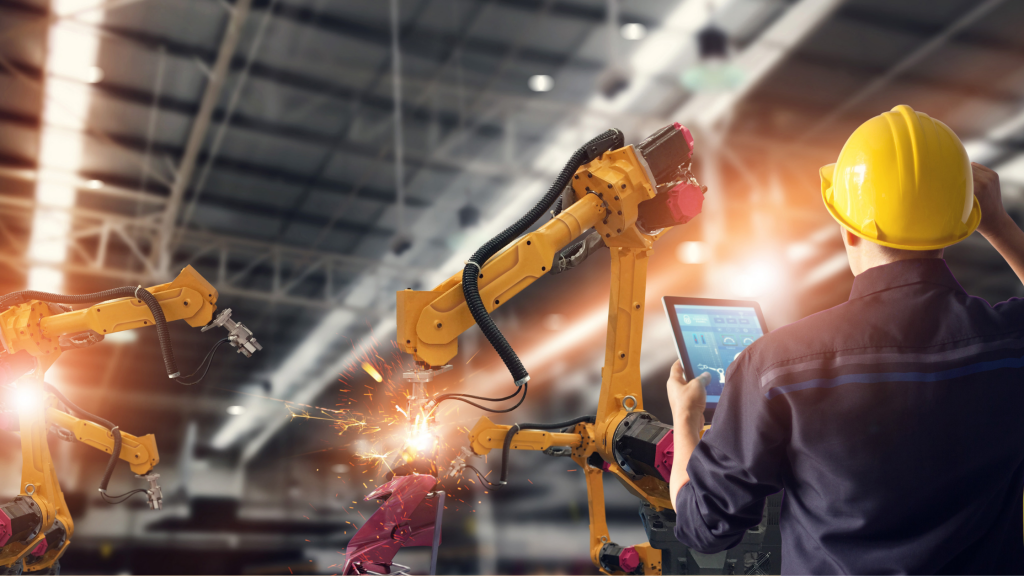Automation and robotics have emerged as crucial technologies in the oil and gas industry, with the potential to significantly enhance efficiency, reduce operational costs, and minimize human risks.
Here’s how automation and robotics are making an impact in this sector:
1. Drilling and Exploration:
- Automated Drilling Systems: Automated drilling rigs equipped with robotics can precisely control drilling operations, resulting in faster and more accurate drilling processes.
- Remote Sensing: Drones equipped with advanced sensors can perform aerial surveys, monitor pipelines, and assess the condition of infrastructure in remote and hazardous locations.
2. Inspection and Maintenance:
- Robotic Inspectors: Robots designed for inspections can access hard-to-reach areas of pipelines, tanks, and offshore structures without the need for human entry.
- Condition Monitoring: Sensors and data analytics enable real-time monitoring of equipment health, allowing for predictive maintenance and reducing downtime.
3. Subsea Operations:
- Autonomous Underwater Vehicles (AUVs): AUVs equipped with cameras and sensors can perform inspections, maintenance, and repairs on subsea infrastructure.
- Remotely Operated Vehicles (ROVs): ROVs with manipulator arms and cameras are used for various tasks, including pipeline inspections, subsea equipment installation, and cable repairs.
4. Pipelines and Transportation:
- Pipeline Inspection Robots: Robots designed for pipeline inspection can identify leaks, corrosion, and structural damage, preventing environmental disasters.
- Automated Transportation: Autonomous vehicles and drones are used for transporting materials, equipment, and personnel to remote or hazardous locations.
5. Safety and Risk Reduction:
- Reducing Human Exposure: By automating tasks in dangerous environments, such as drilling platforms and refineries, automation reduces the exposure of human workers to safety risks.
- Emergency Response: Robotics can be deployed for rapid response in emergency situations, including fire-fighting and search-and-rescue operations.
6. Data Analytics and Decision Support:
- Big Data Analysis: Automation facilitates the collection and analysis of vast amounts of data from sensors, helping operators make informed decisions and optimize processes.
- Machine Learning: Algorithms can predict equipment failures and recommend maintenance schedules, reducing downtime and costs.
7. Environmental Impact:
- Emissions Reduction: Automation can lead to more precise control over processes, reducing emissions and environmental impact.
- Spill Response: Robotics can be deployed in the event of an oil spill for containment and cleanup operations.
8. Cost Efficiency:
- Reduced Labor Costs: Automation can lead to substantial savings in labor costs, as fewer human operators are needed for routine tasks.
- Optimized Operations: Improved efficiency and reduced downtime result in overall cost reductions.
Despite these advantages, the adoption of automation and robotics in the oil and gas industry also presents challenges:
- Initial Investment: Implementing automation and robotics systems can require significant capital investment.
- Technical Challenges: Developing and maintaining advanced automation systems can be technically complex.
- Workforce Transition: As automation increases, there may be a need to retrain or transition the workforce to more advanced roles.
- Cybersecurity: Automation systems are susceptible to cybersecurity threats, requiring robust security measures.
In conclusion, automation and robotics are transforming the oil and gas industry by enhancing efficiency and reducing human risks.
These technologies have the potential to improve safety, reduce operational costs, and minimize the industry’s environmental impact while driving productivity and competitiveness.
However, careful planning, investment, and attention to technical and cybersecurity challenges are essential for their successful implementation.
Read more on Sparkview Energy:
Electric Vehicles and the Future of Oil Demand
Environmental Impact of Oil and Gas Equipment: Mitigation and Sustainability Measures
Advancements in Oil and Gas Drilling Equipment: Efficiency and Safety Improvements







